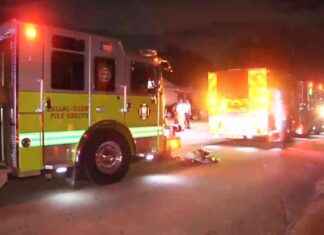the Dream of owning and driving an electric car can prove quite difficult to meet, if you live in public housing or block of flats, for the many places you can not charge his electric car.
It can delay the green transition, think FDM, which calls for support for housing associations, and political help.
most of The country’s over one million tenants must often look far after charging points for electric cars. It writes the FDM in a press release.
Bilejerorganisationen have spoken with a number of the nation’s largest public housing associations, as the concurrence says that you do not have an overview of how many recharging points you have.
The lack of lademulighed not only makes it difficult for the country’s tenants to switch to the electric car, but it also risks delaying the green transition, saith the FDM.
the Cars – 13. feb. 2020 – pm. 22:22 the Predecessor shared waters: So, love becomes the new electric Hummer
Denmark Shall achieve the goal of 70 percent reduction of CO2 emissions in 2030, it will bl.a. require up to 1.5 million electric and plug-in hybrid vehicles on the roads. It will again require a 30,000 ladepunkter by, for example, highways, workplaces and apartment buildings, if it is to cover the need for the third of the Danish households, who do not have the option to leave at home.
– It is a huge problem, that the tenants in the public housing and in other high-rise buildings often do not have the opportunity to let an electric car up. It requires a solution as soon as possible, otherwise it can get many to opt out of an electric car, says Torben Lund Kudsk, head of the FDM, in a press release.
In many associations, there are no charging points, and it is according to the FDM, together with several things. Charging points are expensive for organizations to establish, and in addition, it is not permitted for general housing associations themselves that operate the charging points. It requires an external provider – typically one of the incumbent operators.
– As it is today, it is so expensive and troublesome to set up charging points that the green transition is not going to happen by lejeboligerne. In addition, the residents have to be tied to the provider, who put the stand up. But it will often make more sense if the associations themselves must establish and be responsible for the operation of the ladestanderne, says Torben Lund Kudsk.
A new EU directive, which will enter into force only in march, dictates that the p-areas by new construction or major alterations must be made clear to that charging points can be set up, but in the Danish implementation of the directive there is no requirement that it actually must be established recharging points, and it amazes FDM.
– Denmark put up the minimum requirement in the new EU-directive. But if the politicians really mean anything with the green transition, it is not enough. It should be easier for people to leave. From the Palace one could make it easier and more affordable for vehicle owners without their own p-space to establish the battery charger and in the whole, to ensure that legislation does not stand in the way. Concretely, as in Norway, be in the form of grants to housing associations for the establishment of a common charging points, says Torben Lund Kudsk.
See also: Now you can let the electric car even faster along the Danish motorways








